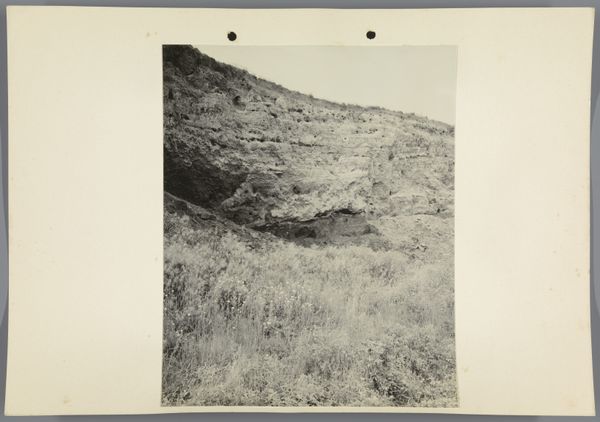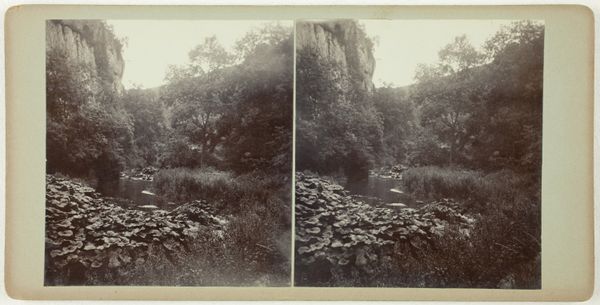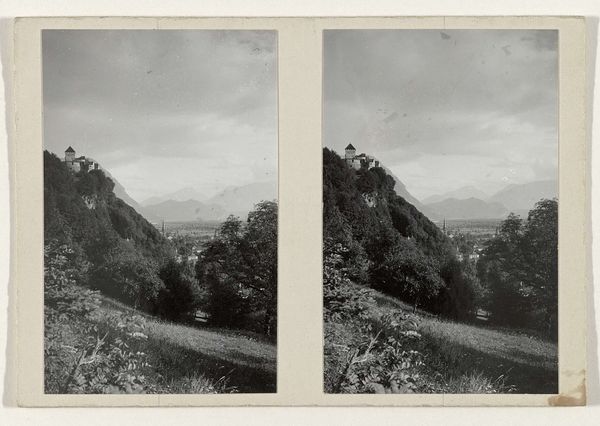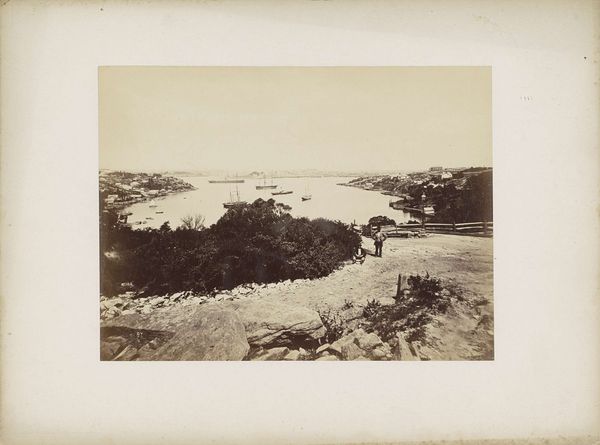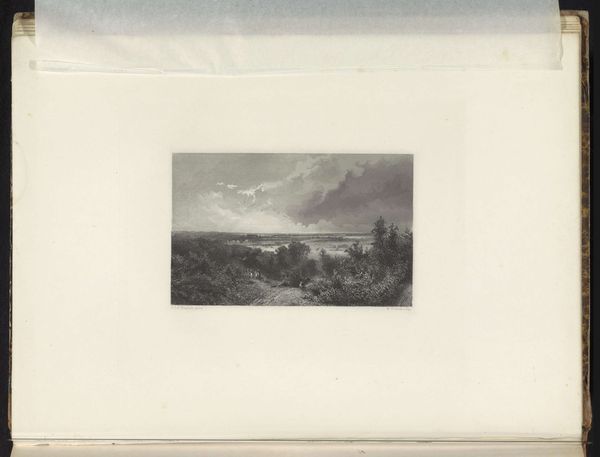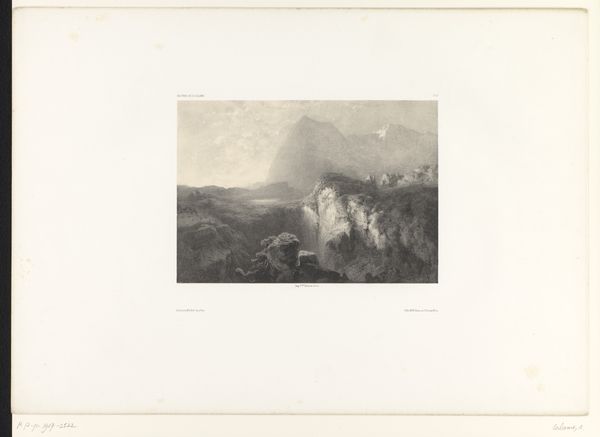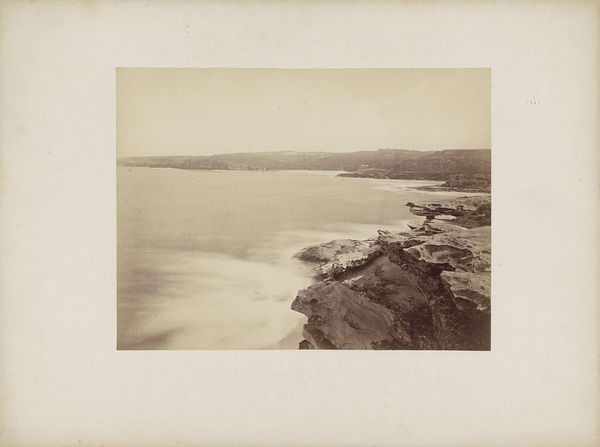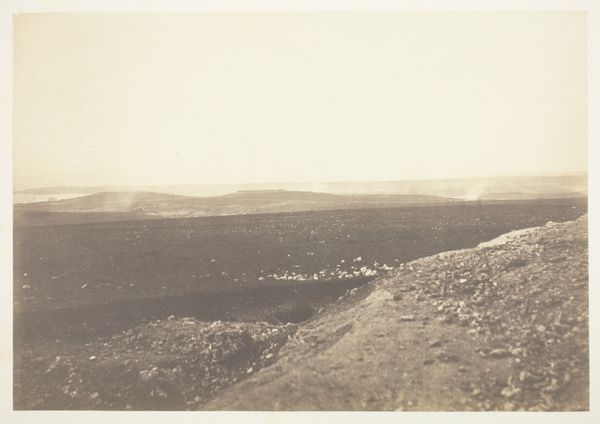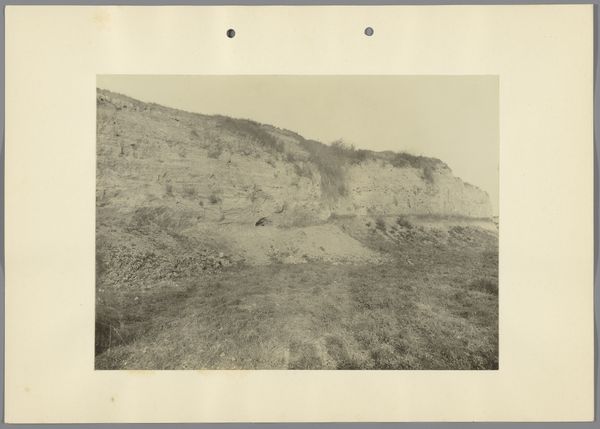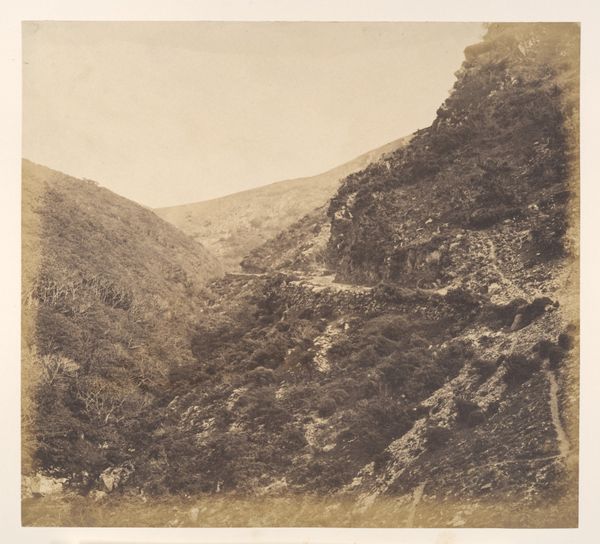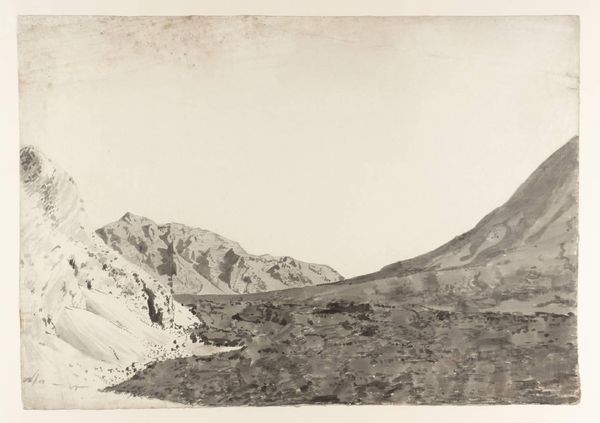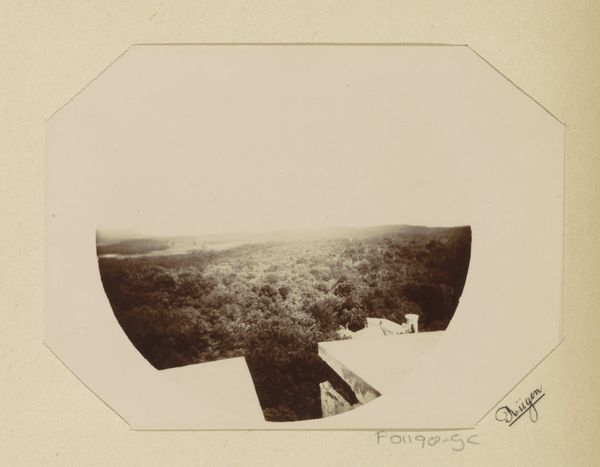
Beboste kusthelling, vermoedelijk in de buurt van Sydney c. 1890 - 1910
0:00
0:00
charlesbayliss
Rijksmuseum
photography, gelatin-silver-print
#
pictorialism
#
landscape
#
photography
#
forest
#
gelatin-silver-print
Dimensions: height 241 mm, width 324 mm
Copyright: Rijks Museum: Open Domain
Editor: So, we have here a gelatin-silver print from Charles Bayliss, dating roughly from 1890 to 1910, titled "Beboste kusthelling, vermoedelijk in de buurt van Sydney," or "Wooded coastal slope, probably near Sydney." I'm struck by the hazy quality of the image; it almost feels more like a painting than a photograph. How do you interpret this work? Curator: It's fascinating how Pictorialist photography, like this one, sought to elevate photography to the status of fine art. Think about the socio-political context. Photography was still fighting for recognition as art. Bayliss, by softening the focus and carefully composing the image, creates a sense of timeless beauty, differentiating it from purely documentary photography. Do you think that the location, presumably Sydney, contributes anything to this effect? Editor: That's a great point about its fine art aspirations. Perhaps the Australian landscape itself held a certain symbolic weight. It's being "captured" in a soft focus which almost romanticizes it. Curator: Exactly. The selection and framing of landscape imagery played a crucial role in shaping national identity and promoting tourism in late 19th and early 20th century Australia. Photography became a tool for both scientific exploration and artistic expression, influencing public perception and potentially, the cultural appreciation of Australia. Does the image give you a sense of that colonial gaze? Editor: I see what you mean. It's like claiming or showing off this landscape, presenting it in a way that's accessible and beautiful, suitable for consumption and perhaps even development. Curator: Precisely. And thinking about museums and galleries, presenting such works helped build a particular narrative of Australia's beauty and opportunity. This wasn't just about aesthetics, but about constructing a specific historical and cultural identity through curated imagery. Editor: That’s given me a lot to think about in terms of photography's role in shaping cultural narratives and influencing social perceptions. Thanks! Curator: My pleasure! It is fascinating how seemingly simple landscapes carry so much historical and political weight.
Comments
No comments
Be the first to comment and join the conversation on the ultimate creative platform.
